How to lay a cable in a trench underground according to the rules

When electrifying a summer cottage, any owner asks the question: which method of laying the cable to choose - air or underground. Despite the fact that pulling electrical communications through the air is somewhat cheaper and seems easier than laying cables underground, it has several disadvantages. So, if the objects are at a decent distance from each other, you will need to install additional pillars. Hanging wires overhead is also not a pleasure. Therefore, in most cases, people opt for the underground method. In this article, we will analyze how the cable should be laid in the trench, and what are the features of this work.
Content
- Rules and technology for laying underground electrical communications
- Trench parameters for laying power lines
- The procedure for laying the cable in the ground
- What is the best conductor to use for the installation of underground electrical lines?
- Lumpy connection
- Entering electrical wiring into the house
- Features of winter laying of underground power lines
Rules and technology for laying underground electrical communications
It is necessary to lay the electrical cable in the ground in accordance with the requirements of the Electrical Installation Rules, having previously drawn up a wiring diagram. If you manage to lay the route in a straight line, this will allow you to get by with less electrical wire, but this is often not possible. Below are the basic rules for laying cables underground:
- Try not to pass the trail near large trees, it is best that this distance is at least 1-1.5 meters.
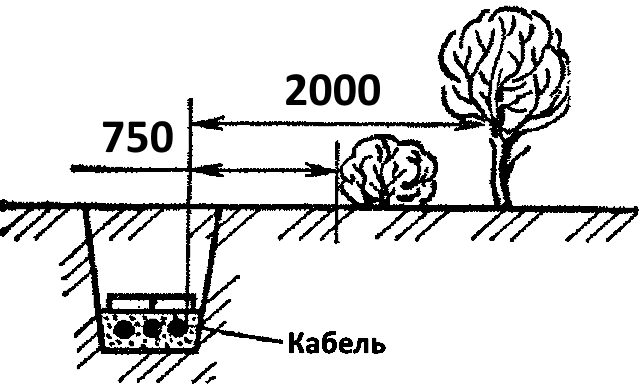
- Do not route electrical wire through areas of high stress. These can be parking lots, pedestrian paths or places intended for the entrance of a sewage service car. Usually they are bypassed around the perimeter, but if this is not possible, then the conductor is placed inside special protective cases, which are pieces of pipes made of HDPE or metal.
These devices are also used in places where the trench intersects with water and gas mains. A protective case is also laid where it is impossible to bury the cable at least 0.5 meters or remove large and solid objects from the route.
- When laying a trench along the foundation, it is necessary to maintain a distance between them of 0.6 m. If this requirement is not observed, even a slight displacement of the soil or foundation can damage the electrical line.
- The wire to be laid should not be crossed with others. If this is not possible, then both cables must be placed in a protective case and run one cable over the other. The distance between them should be at least 15 cm.
If the case is to be of considerable length, it is welded from several pieces of pipes.
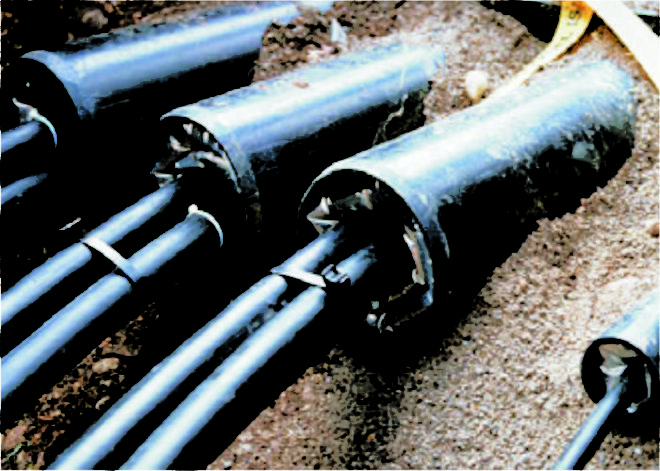
Trench parameters for laying power lines
Having decided on the laying scheme, you need to dig a trench, while adhering to the following dimensions:
- The depth of the cable should be 0.7-0.8 m.
- If one conductor is laid, then the width of the trench used for laying the cable should be 0.2-0.3 m; if there are two or more electrical wires to be laid, it is necessary to calculate it in such a way that there is at least 0.1 m between the threads running along the bottom.
The procedure and parameters for underground cable laying on video:
The procedure for laying the cable in the ground
Having dug a trench, you need to:
- Remove roots, stones and other objects with hard and sharp edges from it, otherwise they may damage the insulation during installation.
- Flatten the bottom and then tamp.It is not necessary to achieve ideal evenness, the main thing is that there are no sharp drops.
- Fill the bottom with sand and level it so that the layer thickness is approximately 0.1 m. Ordinary quarry sand from the pits is suitable, but it should not contain foreign objects that could damage the electrical cable, therefore, it must be sieved before backfilling. So that there are no obvious irregularities at the bottom, this material must also be tamped after filling into the trench.
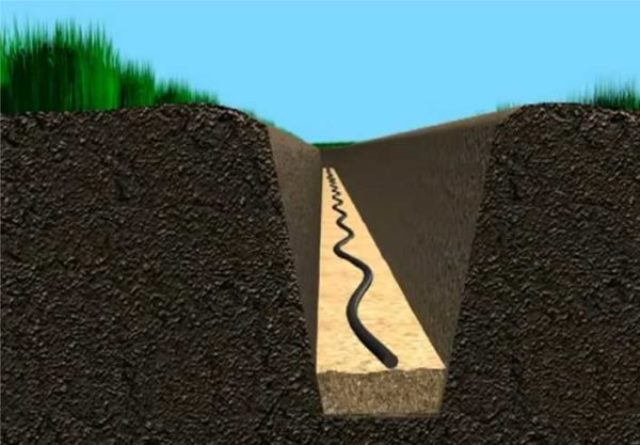
- Inspect the insulation of electrical wires for possible damage. If possible, call them with a megohmmeter to check for an open circuit (in the absence of this device, you can use a regular multimeter). Having found damage, they need to be repaired.
- Lay the cable on the sandy bottom of the trench in light waves, without stretching.
Where necessary, protect the conductor with sheaths.
- Sketching a plan of the laying route, marking landmarks and distances to objects on it - this will simplify further repair work if the need arises.
- Cover the laid electrical cable from above with sand, also having previously sieved the material. After that, the sand layer (approximately 0.1 m) must be tamped down with your feet.
- Pour the previously excavated soil in the next layer, also removing objects dangerous for wiring from it, level and tamp. The thickness of this layer should be 0.15-0.2 m.
- Then the ditch is completely covered with earth slightly above the surface level. This is necessary so that after natural compaction and subsidence of the soil, depressions do not form at the place of laying.

After completing the listed steps, the line can be connected to the load, having previously called it to check for integrity.
Now you know how to lay the cable in the ground in compliance with the established norms. Next, we will look at several nuances related to this work.
What is the best conductor to use for the installation of underground electrical lines?
Installing an underground power line requires a lot of effort and time. In order not to suffer in the future with constant repairs, it is better to immediately choose a high-quality wire that will be able to regularly perform its function for many years. Therefore, the question of choosing a cable that will be used for laying underground should be approached with the utmost responsibility.
Using an armored cable from a reliable manufacturer, you can be sure of its serviceable and durable operation. However, the cost of such a conductor is quite high, and if a person cannot afford such a purchase, he uses simple NYM or VVG wires. To increase the reliability of such lines, you should use a double-walled corrugated DKS hose, into which an electric wire is placed along its entire length.

In places where the probability of damage to the wiring due to heavy loads is high enough, protective cases are recommended. These devices will protect the live conductors, taking on most of the loads. When routing multiple cables, each cable must be provided with a separate sheath.
Routing power lines inside corrugated hoses or pipes has the added benefit of easy cable replacement. If the old wire has become unusable, it is enough to open the ends of the route and tie a new one to the end of the non-working cable. After that, the faulty conductor is pulled out, and a new one is installed in its place. Of course, this is possible only if the long time spent in the ground did not lead to the destruction of protective devices.
Lumpy connection
It is better to use a solid cable for laying, but if it is not possible to find a piece of wire of the required length, it is better to connect the two wires on the surface of the earth, inside a sealed junction box. Such a connection is easy to maintain and, if necessary, alter.It is not recommended to put it in a homemade sleeve and bury it in the ground - the contact will quickly break, and to restore it, you will have to dig a trench every time.
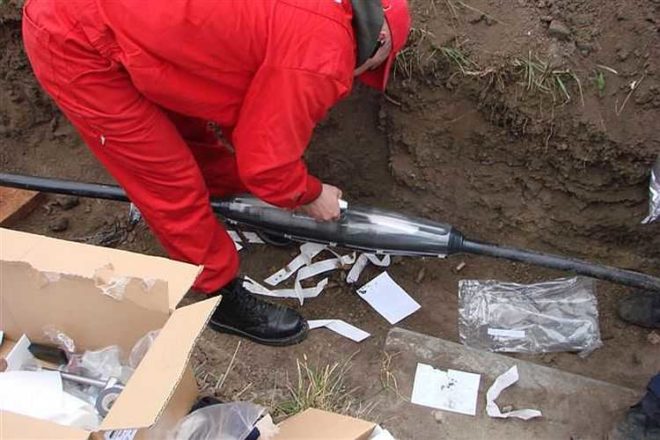
For comparison, the video shows the manufacture of a full-fledged clutch that can be hidden underground:
Entering electrical wiring into the house
When laying the cable underground in the country, it is necessary to take into account that when entering the conductor into the structure (house or other building), it must not be passed under the foundation. Usually, during construction, a mortgage is embedded in the foundation tape - a piece of pipe protruding outward by a few centimeters, into which an electrical wire can be easily inserted.
If the mortgage was not made during construction work, a hole must be drilled in the foundation, into which the pipe is then inserted and fixed.
Sometimes the owners of a house with a monolithic foundation do not want to drill a base for installing mortgages. The way out in this case is as follows: the cable is pushed into the metal pipe and rises along the wall of the structure to a certain height (usually this is the level at which the lead-in cabinet is installed). At this mark, a mortgage is walled into the wall, through which the wire is brought into the house.
If an armored cable is used as a conductor, then its sheath must be grounded. This can be done by welding or soldering an insulated wire to it, which must be brought to zero in the electrical panel.
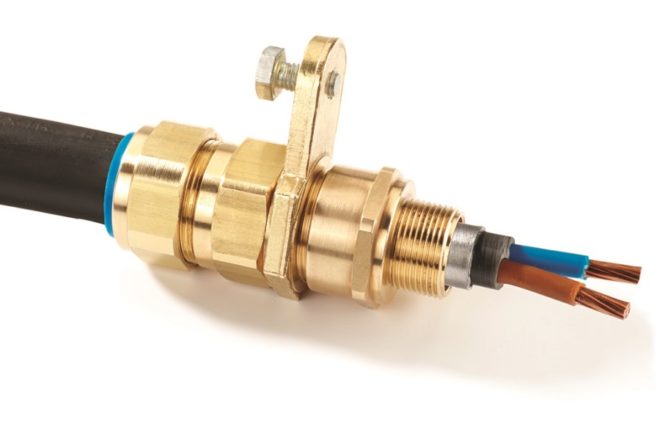
This should not be neglected, otherwise, if the phase breaks through, it will fall on the armored shell, touching which, the person will receive a strong electric shock, and it’s good if the case does not end with the death of the victim. If the armor is properly grounded, then upon breakdown, an automatic switch will operate, turning off the current supply until the malfunctions are eliminated.
Features of winter laying of underground power lines
If the circumstances are such that you have to do this work in low temperature conditions, then when performing it, several recommendations must be taken into account:
- Before laying the conductor in the trench, it must be warmed in a warm room. You can do this faster by using a transformer, but only if you have the skills and experience to do this.
- The warm cable must be laid in a trench. In this case, you should work quickly so as not to let it freeze. If the temperature outside is 15-20 degrees below zero, then no more than half an hour is given for laying. If the frost is even stronger, the installation of the power line cannot be performed.

- It is allowed to lay an underground line without heating in the following cases:
-
- If a high-pressure electrical cable is used and the air temperature is -5 degrees or higher.
- If a wire with simple insulation is used, and the air temperature is -7 degrees or higher.
- If a conductor with rubber or PVC insulation is used, and the air temperature is not lower than -15 degrees.
- If the conductors are insulated with polyethylene or rubber, and in addition have an additional sheath of lead.
In this article, we figured out in detail the question of how to lay a cable underground and what are the features of this procedure in various conditions. This work, despite its laboriousness, is not too complicated in technical terms. The most important thing is to take into account the requirements of the PUE and the recommendations set out in this material.




